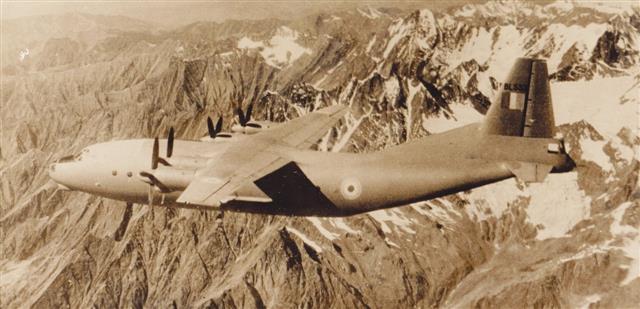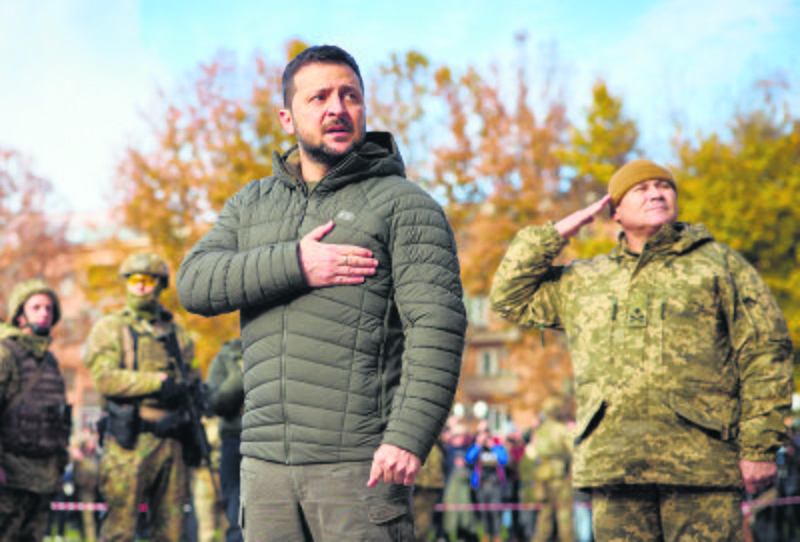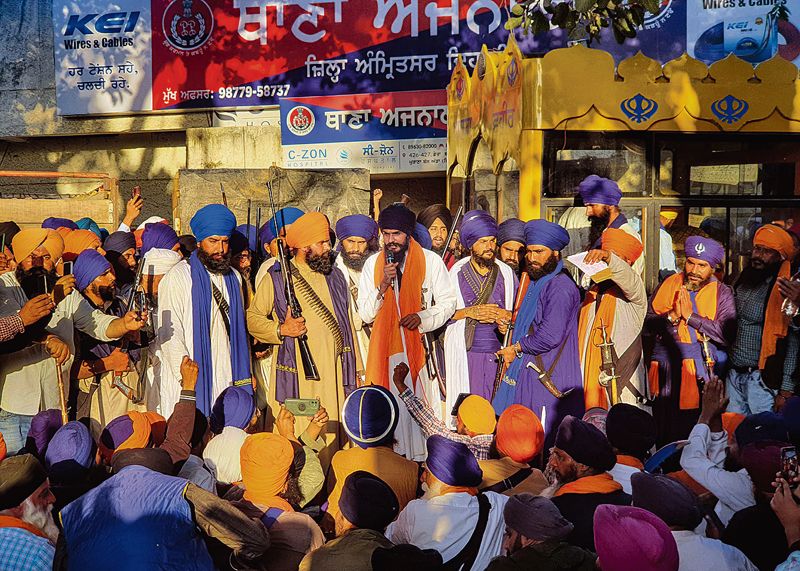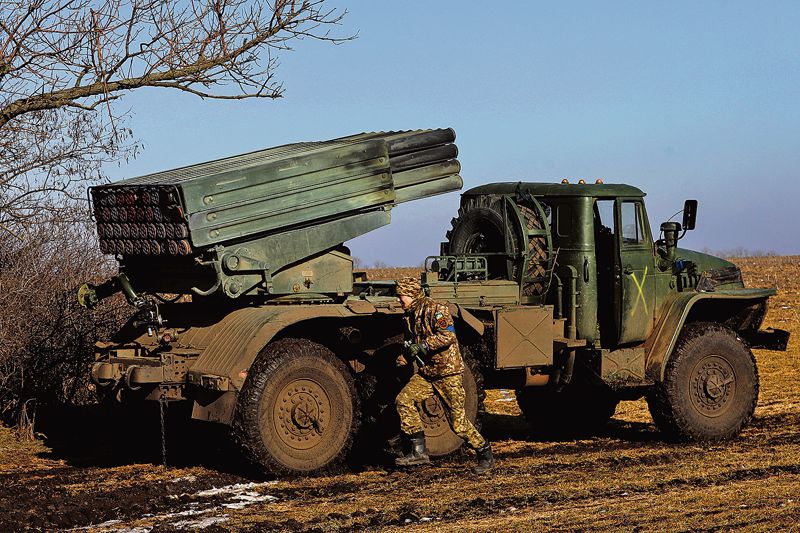

Described as a ‘radical preacher’, Amritpal Singh aspires to be the next Bhindranwale. That aim will not be easy to achieve. Bhindranwale was the product of political machinations gone awry. Amritpal obviously wants to exploit the current gloomy mood of Punjabi youth, caused by unemployment and the rising prices of essential commodities, and aggravated by the Russia-Ukraine conflict with its implications for global economy.
Amritpal can’t be allowed to become larger than life. He has to be contained before he assumes an aura of invincibility.
According to media reports, the police had arrested one of his associates, Lovepreet Singh ‘Toofan’, for allegedly kidnapping and assaulting Varinder Singh of Chamkaur Sahib. Amritpal had also been named in the FIR lodged at the Ajnala police station. Amritpal announced a march to the police station to demand Lovepreet’s release. Anticipating trouble, police personnel were drawn from neighbouring police stations and deployed at Ajnala.
Barricades had been set up, yet a massive crowd of supporters of Amritpal and his Waris Punjab De outfit, armed with swords and a few with guns, stormed the barricades, entered the police station and caused extensive damage to government property. A hundred trained policemen, given implicit instructions on what they should do if attacked by a mob, should normally have been able to deal with the mob and disperse it. But if they had not been told clearly of the type and extent of force they could use to counter violence by the mob, the situation was destined to get out of control, and it did! I would squarely categorise the response as a failure of the police leadership and the state’s political leadership for not making its intention clear.
I would frown at armchair criticism of the police when dealing with piquant situations. On the ground, it is never easy to take quick decisions as events unravel in front of the police officer in charge on the spot. If he is a confident individual with his wits about him, the public should accept the decision, even if the results turn sour. It is the intent of the decision-maker that should matter.
Senior IPS officers turned up later, according to the reports, and held talks with Amritpal. He seemed to have convinced the Police Commissioner of Amritsar and the Ajnala SSP that Lovepreet was not the man involved in kidnapping Varinder! The senior officers agreed to release Lovepreet. This capitulation is what will trouble the police and the political leadership henceforth.
Lovepreet had been named by Varinder in his initial complaint. What the police needed to do was to check whether there actually had been a kidnapping. Who thrashed Varinder? It was reported that he had objected to Amritpal’s utterances, and, if that is true, a motive for the assault was available.
The Ajnala police would have kept their supervising officers in the loop on such an important political happening. Deputing extra forces from neighbouring police stations could have been ordered only by an officer with the authority over all five police stations. If reserves were deputed from the armed battalion, the order could only have been issued from the state DGP’s office. There is no way the seniors can claim that they were not in the know of the decision to arrest the men named in the FIR.
It is the police capitulation to the radical preacher that will come back to haunt the administration. I see the hand of the political leadership in this surrender to unlawful demands. There is no way the CM was kept out of the loop. It is evident that the AAP government led by Bhagwant Mann is still to find its feet on the security front. It could be its Achilles’ heel.
An even worse scenario now is the possible recrudescence of terror in this sensitive border state. Our neighbour, mired in an economic morass, will try to fish in troubled waters across the border. In the 1980s, it had provided training and given shelter to Khalistani terrorists. It had also facilitated the movement of arms across the border. The neighbour will touch base with Amritpal, if it has not done so already.
NSA Ajit Doval is best placed to intervene. He knows what to do, how it has got to be done and who should be entrusted with the task. Amritpal cannot be permitted to become larger than life. He has to be contained before he assumes an aura of invincibility. He has tasted victory in Ajnala. Consequently, support to him in Punjab will increase.
The Union Government may try to leverage the state government’s failure in Ajnala to gain political advantage in a state that has not welcomed the BJP. It will be a mistake to do so. The AAP was voted to power with a massive majority. Mann was propelled to the CM’s chair as the Sikh face of the AAP. The BJP has its own Sikh face in Capt Amarinder Singh, but he is a spent force. The wiser option for the Modi government is to leave this state alone lest it should burn its fingers.
An even worse option would be to play politics because Mann and his party have been pushed into a corner by a tyro who till last year was a clean-shaven Sikh living a nondescript life in Dubai. Sensing an opportunity for his latent talents, he grew a beard, started wearing clothes that imitated those of Bhindranwale and made his supporters carry Guru Granth Sahib to deter the police from acting.
The opportunity to nip the trouble in the bud having been lost, the task of the leadership, both political and police, will now be made difficult. The AAP government should seek Doval’s help. He can do so behind the proverbial curtain without announcing his role of adviser. A double-pronged approach would be required. The bulk of the population, the Jat Sikh farmers in the villages, had suffered the ravages of terrorism in the 1980s and early 1990s. They can be won over by well-reasoned arguments on multiple fora.
At the same time, as the communication lines with the masses are developed, a quick rounding up of Amritpal and his cronies should be effected. All laws the BJP governments use against their political opponents and critics should be used against this looming menace before it bites both the state government and the Centre.














































































